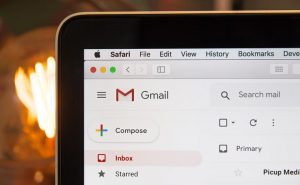Technology is changing how we view and define identity and signature. What does it mean to be a person in the digital age? The idea of what makes an individual has shifted with technology’s rise, but many different facets make up our identities. We will discuss eight ways that technology has changed the concept of identity and signature.
Digital Identity
Technology has changed how we think of our digital identity as a subset of our overall identity. With social media, email, and the internet in general, many people have some part of their lives that remains on the web for anyone to see if they look hard enough. This can be both good and bad because there are many cases where a person’s digital identity can be used against them.
Digital Signature
Digital signatures are one of the biggest legal changes to come out of technology. They are used for electronic transactions, contracts, and verifying authenticity by holding a digital file that is unique to an individual’s computer or device. It can also be authenticated through biometrics like fingerprints on phones with fingerprint sensors – which has led some users to use their thumbprints as digital signatures. DocuSign templates are now commonplace for everything from business contracts to mortgage lending.
Identity Theft
Identity theft has become a major crime in today’s digital age, and it is often the consequence of people’s unsecured data being breached. Data breaches that have leaked information about millions of users can lead to identity theft and stolen credit card numbers, leading to financial loss because banks will not reimburse fraudulent purchases made by a thief.
Digital Footprints
The internet has created a “digital footprint” for everyone who uses it, the trail of information left behind when someone does something online. This footprint can include everything from photos to videos shared on social media platforms to web searches tracked by search engines – essentially anything that could be found with just a few clicks.
Digital footprints can also include the apps people download on their devices and what they do with them. For example, if someone uses a fitness app to record how many miles he has run, then an employer could see this information when looking over his digital footprint – but will others be able to access it too?
Digital Past
It is easy to “Google” someone and find out all sorts of information about them, including their digital past. Anyone with internet access (including potential employers) can bring what people did in the past, but how accurate is this information? Digital footprints might include posts shared on social media five years ago or pictures from a party that got out of hand.
Digital Memory
As we use more technology, our brains are changing to adapt to that technology. Computer scientists have studied how people remember things and found that the brain associates memories with related information rather than the thing itself. This means that if someone is searching for a specific piece of information online, they may also come across additional websites or material associated with that information.
Digital Distraction
The digital age has made it easier than ever to be distracted, and research shows that those who multitask regularly have more trouble focusing. Technology is changing the way our brains work – so much so that some researchers think they can use MRI scans to determine whether or not someone is focused based on brain activity.
Digital Gaps
Technology has also changed how we think about the digital age and its presence in our lives. The so-called “digital divide” is a term used to describe the gap between those who have access to technology at home, in school, or somewhere else versus people without that same access – usually because they cannot afford it. While technology can help us learn and communicate, everyone must have equal access to the same learning and communication tools.


















